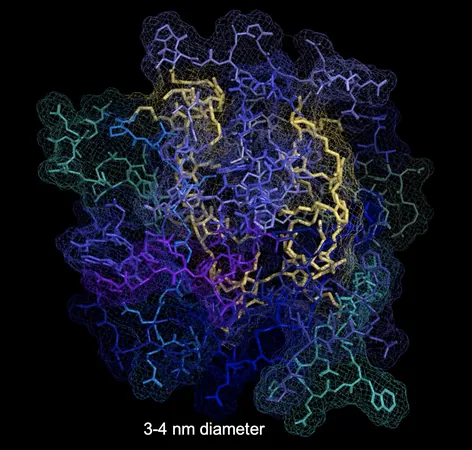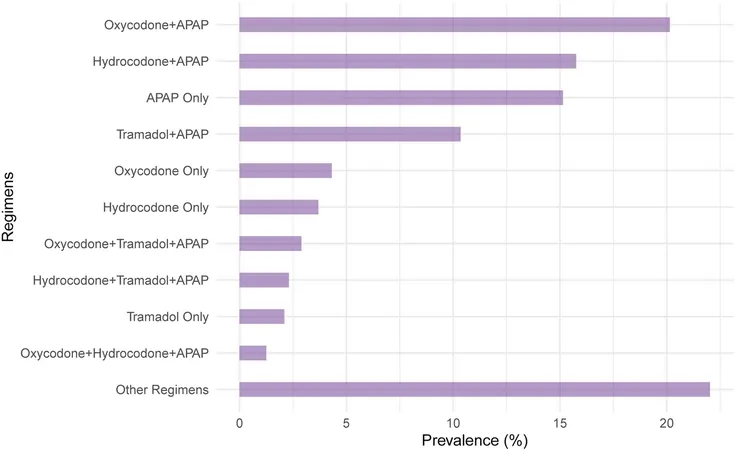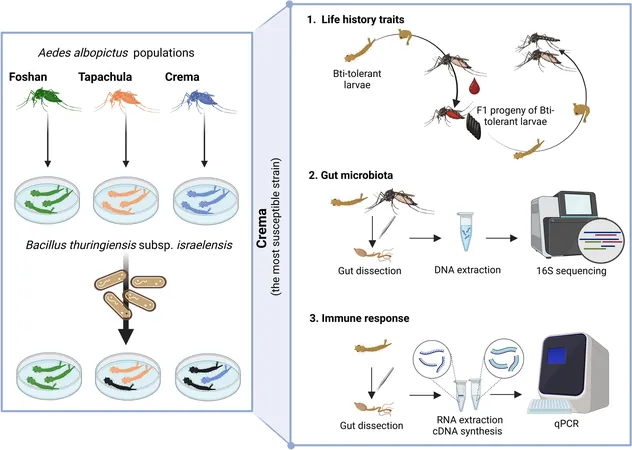
Breakthrough in Huntington’s Disease Treatment: Polymers to the Rescue!
2024-11-07
Author: John Tan
Exciting Development in Huntington's Disease Treatment
In an exciting development for those battling Huntington's disease, researchers at Northwestern University and Case Western Reserve University have made remarkable strides in creating a polymer-based therapy aimed at preventing the devastating effects of this genetic disorder. The study, highlighted in Science Advances, presents an innovative approach to tackling protein aggregation which characterizes Huntington's disease—a progressive illness that leads to severe motor and cognitive impairments.
Understanding Huntington's Disease
Huntington's disease is caused by a genetic mutation that leads to the misfolding of proteins, resulting in toxic aggregates that disrupt normal cellular function and ultimately contribute to the death of nerve cells in the brain. This often results in debilitating symptoms such as difficulty in speaking, swallowing, and movement, with most patients succumbing to the illness within a decade or two after symptoms first appear.
The Breakthrough Treatment
However, a team of researchers led by Dr. Nathan Gianneschi has developed a new therapeutic compound known as a peptide-brush polymer. This innovative treatment functions like a protective shield, preventing the harmful proteins from clumping together. In studies conducted on mice, the polymer demonstrated a capacity to rescue neurons and successfully alleviate symptoms associated with the disease without causing any noticeable side effects, indicating that it is both safe and well-tolerated.
Research and Development
Dr. Gianneschi, who is not only a professor of Chemistry but also holds positions in materials science and biomedical engineering at Northwestern, expressed the urgency of finding effective treatments for this condition. "Huntington's is a horrific, insidious disease," he lamented, reinforcing the severity of the disorder and the urgent need for breakthrough therapies.
Foundation of the New Treatment
The foundation of this new treatment rests on prior research conducted by Dr. Xin Qi's lab at Case Western Reserve, where a crucial protein called valosin-containing protein (VCP)—which abnormally binds to the mutant Huntington protein—was identified. The team previously isolated a naturally occurring peptide capable of disrupting this damaging interaction, but the peptide alone faced limitations in stability and penetration into the brain.
Innovative Polymer Development
To tackle these challenges, Gianneschi and his team crafted a biocompatible polymer that encapsulates multiple copies of the active peptide. This novel structure not only prolongs the peptide's presence in the body—remaining 2,000 times longer than traditional peptide treatments—but also facilitates its transport across the blood-brain barrier, allowing it to reach the affected brain cells effectively.
Results from Mouse Models
When tested on mice models, those treated with the new polymer therapy exhibited profound improvements. Behavioral experiments revealed that the treated mice became more exploratory, crossing more areas of the testing environment as opposed to remaining along the edges, a typical behavior seen in untreated animals with Huntington's disease.
Future Implications
The implications of this research are massive, and with further optimization, the team is excited about exploring potential applications not just for Huntington's but also for other neurodegenerative diseases.
A Personal Commitment
Dr. Gianneschi is personally invested in this quest; having witnessed a childhood friend grapple with the realities of Huntington's, his commitment to this research is both professional and deeply personal. This breakthrough is not just a scientific victory—it holds the promise of better lives for those affected by this ruthless disease.
Looking Ahead
As the scientific community watches closely, we eagerly anticipate the next steps in this research, which brings hope to the millions impacted by Huntington's disease and similar disorders. Remember, every bit of progress counts—and with innovations like these, a brighter future may be on the horizon!




 Brasil (PT)
Brasil (PT)
 Canada (EN)
Canada (EN)
 Chile (ES)
Chile (ES)
 España (ES)
España (ES)
 France (FR)
France (FR)
 Hong Kong (EN)
Hong Kong (EN)
 Italia (IT)
Italia (IT)
 日本 (JA)
日本 (JA)
 Magyarország (HU)
Magyarország (HU)
 Norge (NO)
Norge (NO)
 Polska (PL)
Polska (PL)
 Schweiz (DE)
Schweiz (DE)
 Singapore (EN)
Singapore (EN)
 Sverige (SV)
Sverige (SV)
 Suomi (FI)
Suomi (FI)
 Türkiye (TR)
Türkiye (TR)